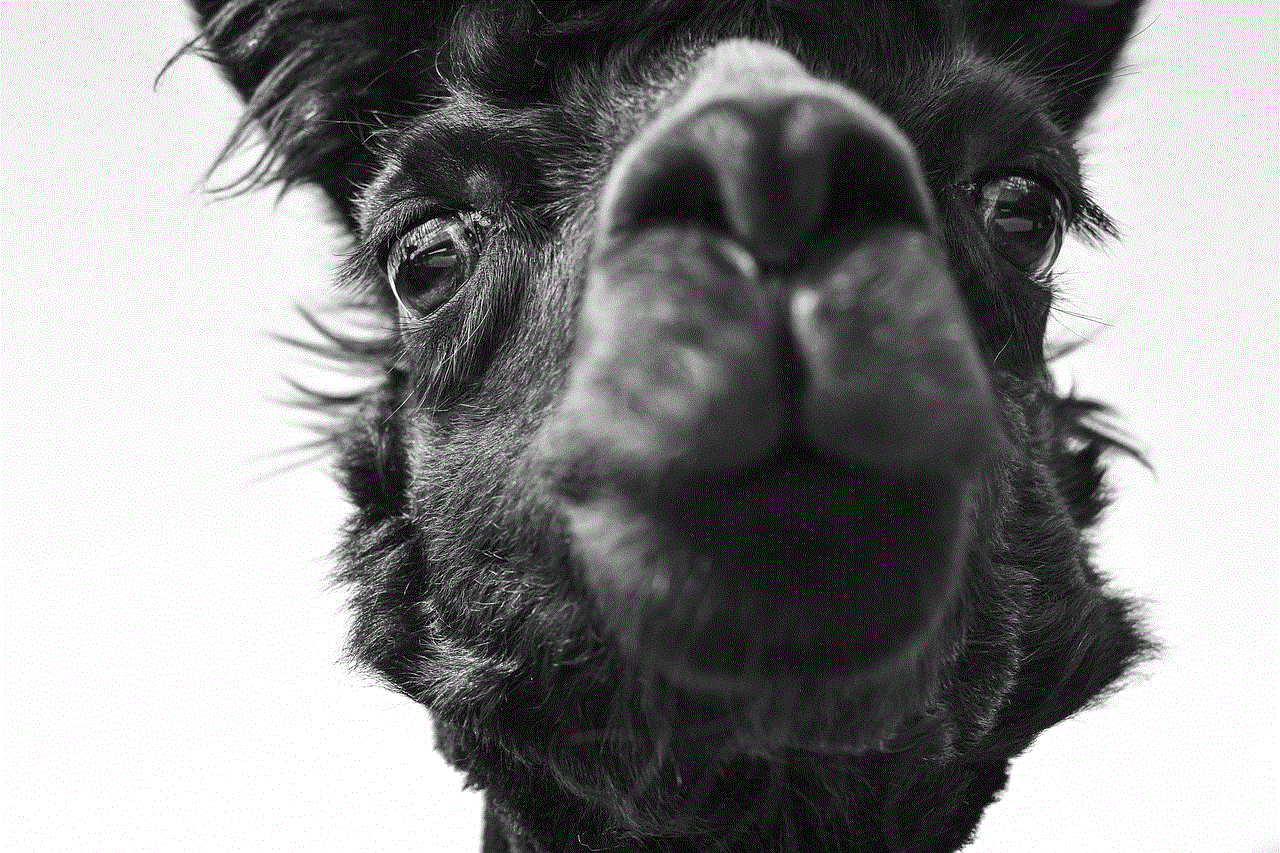anime for teenagers
Anime has become a global phenomenon in recent years, captivating audiences of all ages with its unique storytelling, stunning visuals, and diverse characters. While some may dismiss it as just another form of animation, anime has evolved into a multi-billion dollar industry, with a wide range of genres and themes to cater to different audiences. One of the most popular categories within anime is that of “anime for teenagers,” which encompasses a variety of shows that are specifically targeted towards adolescents. In this article, we will explore the world of anime for teenagers, its impact on the industry, and why it has become such a beloved genre among young audiences.
First and foremost, it is important to understand what exactly is meant by “anime for teenagers.” This category includes shows that are specifically geared towards teenagers, typically between the ages of 13-18. These shows often focus on themes and issues that are relevant to this age group, such as friendship, romance, school life, and coming of age. However, this does not mean that anime for teenagers is limited to these topics. In fact, this genre is incredibly diverse and can cover a wide range of genres, from action and adventure to fantasy and sci-fi.
One of the main reasons why anime for teenagers has become so popular is its ability to tell compelling and relatable stories. Unlike Western animation, which often caters to a younger audience, anime for teenagers tackles more mature and complex themes. For example, shows like “Your Lie in April” and “Clannad” deal with issues like loss, grief, and mental health, which resonate deeply with teenagers who may be going through similar experiences. The blend of heart-wrenching drama and stunning animation makes these shows not only entertaining but also emotionally impactful.
Moreover, anime for teenagers also offers a diverse range of characters that audiences can connect with. These characters are not one-dimensional caricatures, but rather complex individuals with their own strengths, flaws, and struggles. This allows teenagers to see themselves represented on screen, which can be incredibly empowering and validating. For instance, the popular anime “My Hero Academia” features a diverse cast of characters, each with their own unique abilities and personalities. This allows audiences to relate to different characters and find inspiration in their journeys.
Another aspect that sets anime for teenagers apart from other animation is its ability to tackle social issues in a thought-provoking manner. Many anime for teenagers shows address issues like discrimination, bullying, and societal pressures, which are all too familiar to teenagers. By exploring these issues in a fictional setting, anime provides a safe space for teenagers to reflect on and discuss these topics. For example, the anime “A Silent Voice” delves into the consequences of bullying and the importance of empathy, sparking important conversations about these issues.
Anime for teenagers also has a significant impact on the industry as a whole. With the rise of streaming platforms, anime has become more accessible than ever before, allowing teenagers from all over the world to discover and enjoy these shows. This has led to an increase in demand for anime for teenagers, prompting studios to produce more content in this genre. This, in turn, has led to a rise in the quality and diversity of shows, making it an exciting time for fans of anime for teenagers.
Furthermore, anime for teenagers has also played a crucial role in introducing people to the world of anime. Many teenagers are drawn to this genre due to its relatable and engaging nature, and once they become fans, they often explore other genres within anime as well. This has led to an increase in the overall popularity of anime, and it is safe to say that anime for teenagers has been a gateway for many individuals to discover the vast world of anime.
One of the most beloved aspects of anime for teenagers is its ability to evoke strong emotions in its audiences. Many shows in this genre are known for their heartrending storylines and tear-jerking moments that leave a lasting impact on viewers. This emotional connection that teenagers develop with these shows is what makes them so special and memorable. In fact, many teenagers credit anime for helping them through difficult times and providing them with a sense of comfort and escape.
Moreover, anime for teenagers has also been responsible for creating a strong and vibrant fan community. With the rise of social media, fans of anime for teenagers can connect with each other and share their love for their favorite shows. This has led to the creation of fan art, cosplay, and even fan-made content, further adding to the overall experience of being a fan of anime for teenagers. The passionate and dedicated fan base of this genre is a testament to its impact and popularity among teenagers.
While anime for teenagers has undoubtedly had a positive impact on the industry and its audiences, it is not without its criticisms. Some argue that the genre perpetuates unrealistic body standards for both male and female characters, and often portrays toxic relationships and behavior as romantic. While these criticisms are valid, it is important to note that anime for teenagers is a reflection of Japanese culture and societal norms, and not all shows fall into these tropes. Moreover, the industry has been making strides towards more diverse and inclusive representation in recent years, with shows like “Haikyuu!!” and “Yuri!!! on Ice” breaking away from traditional gender roles and stereotypes.
In conclusion, anime for teenagers is a genre that has captured the hearts and minds of young audiences all over the world. With its relatable stories, diverse characters, and thought-provoking themes, it has become a source of comfort, inspiration, and entertainment for teenagers. Its impact on the industry and its fans cannot be denied, and it is safe to say that anime for teenagers will continue to be a beloved and essential part of the anime industry for years to come.
emo things to say
Emo culture has been around for decades, and it is a subculture that is often associated with emotional sensitivity and expression. Emo, short for emotional, is a style of music and fashion that emerged in the 1980s and became popular in the 2000s. It is characterized by its dark and melancholic themes, as well as its unique fashion sense. Emo has evolved over the years, but one thing remains constant – the deep emotions that are intertwined with the culture. In this article, we will explore some of the most emo things to say that capture the essence of this subculture.
1. “I feel everything too deeply.”
One of the defining features of emo culture is the intense emotions that are constantly felt by those who identify with it. To be emo is to feel things to the extreme – whether it’s joy, sorrow, anger, or love. This statement perfectly encapsulates the emotional depth that is associated with the subculture. Emos are known to be highly sensitive individuals who are in touch with their emotions, and this statement reflects that.
2. “My heart is heavy, but my soul is heavier.”
Emos are often perceived as being melancholic and even depressed, and this statement reflects that. It acknowledges the weight of emotions that emos carry, but also highlights the strength and resilience that they possess. Despite the heaviness of their hearts, emos are known to be strong and resilient individuals who are able to overcome their struggles and find solace in their emotions.
3. “I wear my heart on my sleeve.”
This is a classic emo saying that has been around for years. It refers to the tendency of emos to openly express their emotions and not hold back. Emo culture encourages individuals to be honest and authentic with their feelings, and wearing your heart on your sleeve is a way of doing just that. It also reflects the vulnerability that emos are not afraid to show, which is a sign of strength and courage.
4. “My emotions are my superpower.”
Emo culture celebrates emotions and encourages individuals to embrace and express them. This statement highlights the power and strength that come with being in touch with one’s emotions. Emos often see their emotions as a gift, one that sets them apart from others and makes them unique. It is a reminder to embrace and celebrate one’s feelings, no matter how intense they may be.



5. “My scars tell a story.”
Emos are often associated with self-harm and have been stigmatized for it. However, this statement reclaims the narrative and acknowledges that the scars and wounds that emos bear are a part of their story. They are not something to be ashamed of or hidden but are a reminder of the struggles and pain that have been endured. It also reflects the idea that scars can be beautiful and a symbol of strength and resilience.
6. “I am a prisoner of my own emotions.”
This statement reflects the intense and often overwhelming nature of emo emotions. Emos can feel trapped by their own feelings, unable to escape or control them. It also reflects the idea that emotions can be both a blessing and a curse, as they can bring immense joy but also immense pain.
7. “I find beauty in the darkness.”
Emo culture often celebrates the darker side of life, and this statement reflects that. Emos are known for their love of black and their affinity for things that are considered dark, such as skulls, spiders, and other macabre symbols. But beyond the aesthetics, this statement also speaks to the idea that there is beauty to be found in the darkest of places, and that includes one’s own emotions.
8. “I am lost in a world that doesn’t understand me.”
Emos often feel like outsiders in a world that doesn’t understand them. This statement reflects the feeling of being lost and misunderstood, which is a common experience for many emos. It also speaks to the idea that emos are often seen as different or strange by society, and this can lead to feelings of isolation and loneliness.
9. “I am an emotional paradox.”
Emos are known for their complexity, and this statement captures that. On one hand, emos are highly sensitive and in touch with their emotions, but on the other hand, they can also be perceived as stoic and reserved. This statement reflects the duality of emo emotions and the complexity of the subculture as a whole.
10. “Music is my lifeline.”
Music is an integral part of emo culture and is often seen as a means of self-expression and catharsis. This statement reflects the deep connection that emos have with music and the role it plays in their lives. Emo music is known for its emotional lyrics and cathartic melodies, and for many emos, it is a lifeline that helps them navigate their intense emotions.



In conclusion, emo culture is a subculture that is deeply rooted in emotions. From their music to their fashion and their way of life, emos are known for their intense and often complex emotions. The statements mentioned in this article capture some of the most emo things to say, and they reflect the essence of this subculture – being in touch with one’s emotions, embracing them, and finding beauty in the darkness. Emos may be seen as outsiders or misunderstood by some, but to those who identify with the culture, these statements are a reminder of the strength and resilience that comes with being an emotional being.
another word for boujee
When it comes to describing a person or lifestyle, the word “boujee” has become increasingly popular in recent years. It is often used to describe someone who is perceived as being fancy, high class, or luxurious. However, the term has evolved and taken on new meanings over time. Some may argue that it has become overused and even lost its original meaning. As a result, there have been attempts to come up with alternative words to describe this type of lifestyle. One of the most commonly suggested replacements for “boujee” is “posh.” In this article, we will explore the meaning and origins of the word “boujee” and why people are seeking a different term to use.
The word “boujee” first appeared in the 1990s as a slang term used in rap music. It is believed to be a shortened version of the word “bourgeoisie,” which refers to the middle class or people with materialistic values. The term was used to describe someone who was trying to live a wealthy lifestyle, even if they did not have the means to do so. It was often used in a derogatory way, implying that the person was trying too hard to be something they were not.
In the early 2000s, the word “boujee” became more mainstream and was no longer strictly associated with rap culture. It was now used to describe a certain type of lifestyle that was characterized by expensive possessions, designer clothes, and a love for all things luxurious. The term was often used in a positive way, with people proudly declaring themselves to be “boujee” and flaunting their wealth and status.
However, as the word gained more popularity, its meaning began to shift. Some argued that it was now being used to describe anyone who had expensive possessions, regardless of their actual social class or status. This led to a backlash against the word, with many claiming that it had lost its original meaning and become overused and meaningless. This has prompted people to search for alternative terms to use when describing a lavish lifestyle.
One of the most commonly suggested replacements for “boujee” is “posh.” The word “posh” has been around for much longer than “boujee” and has a more established meaning. It is often used to describe someone who is elegant, refined, and sophisticated. Unlike “boujee,” which can be seen as a superficial term, “posh” has a more positive connotation and is often associated with class and high social status. This makes it a more suitable alternative for those who want to describe a luxurious lifestyle without using the term “boujee.”
Another word that has been suggested as a substitute for “boujee” is “fancy.” The word “fancy” has a similar meaning to “posh” but is more commonly used to describe something that is expensive, elaborate, or extravagant. It is a word that has been used for centuries and is often associated with high society and the upper class. Unlike “boujee,” which is relatively new and has only recently become popular, “fancy” is a word that has stood the test of time and is unlikely to become overused or lose its meaning.
Some people have also suggested using the word “lavish” as an alternative to “boujee.” The word “lavish” is often used to describe something that is extravagant, luxurious, or grand. It is a term that is commonly used to describe a lifestyle that is characterized by excess and indulgence. Like “fancy,” “lavish” has been around for a long time and has a more established meaning, making it a suitable replacement for “boujee.”
Another word that has been suggested as a synonym for “boujee” is “opulent.” The word “opulent” is often used to describe something that is rich, luxurious, and lavish. It is a term that is commonly associated with wealth and abundance. Like “fancy” and “lavish,” “opulent” is a word that has been around for a long time and has a more established meaning, making it a suitable alternative for “boujee.”
In recent years, the word “extravagant” has also been used as a synonym for “boujee.” The word “extravagant” is often used to describe something that is excessive, lavish, or wasteful. It is a term that is commonly associated with a lifestyle that is characterized by overspending and indulgence. Unlike “boujee,” which can have a positive or negative connotation, “extravagant” tends to have a more negative connotation, making it a suitable term for those who want to describe a lifestyle that is perceived as being excessive or over the top.



Some people have also suggested using the word “luxurious” as an alternative to “boujee.” The word “luxurious” is often used to describe something that is characterized by luxury, wealth, and extravagance. It is a term that is commonly associated with a lifestyle that is marked by high-end possessions and indulgence. Unlike “boujee,” which can have a superficial connotation, “luxurious” has a more positive and established meaning, making it a suitable substitute for those who want to describe a lavish lifestyle without using the word “boujee.”
In conclusion, the word “boujee” has become increasingly popular in recent years, but its meaning has evolved and taken on new connotations. While some still use it to describe a luxurious lifestyle, others argue that it has become overused and lost its original meaning. As a result, there have been attempts to come up with alternative words to use when describing this type of lifestyle. Some of the most commonly suggested replacements for “boujee” are “posh,” “fancy,” “lavish,” “opulent,” “extravagant,” and “luxurious.” These words all have similar meanings but may have different connotations and levels of sophistication. Ultimately, the choice of word will depend on the context in which it is used and the image that one wants to portray.